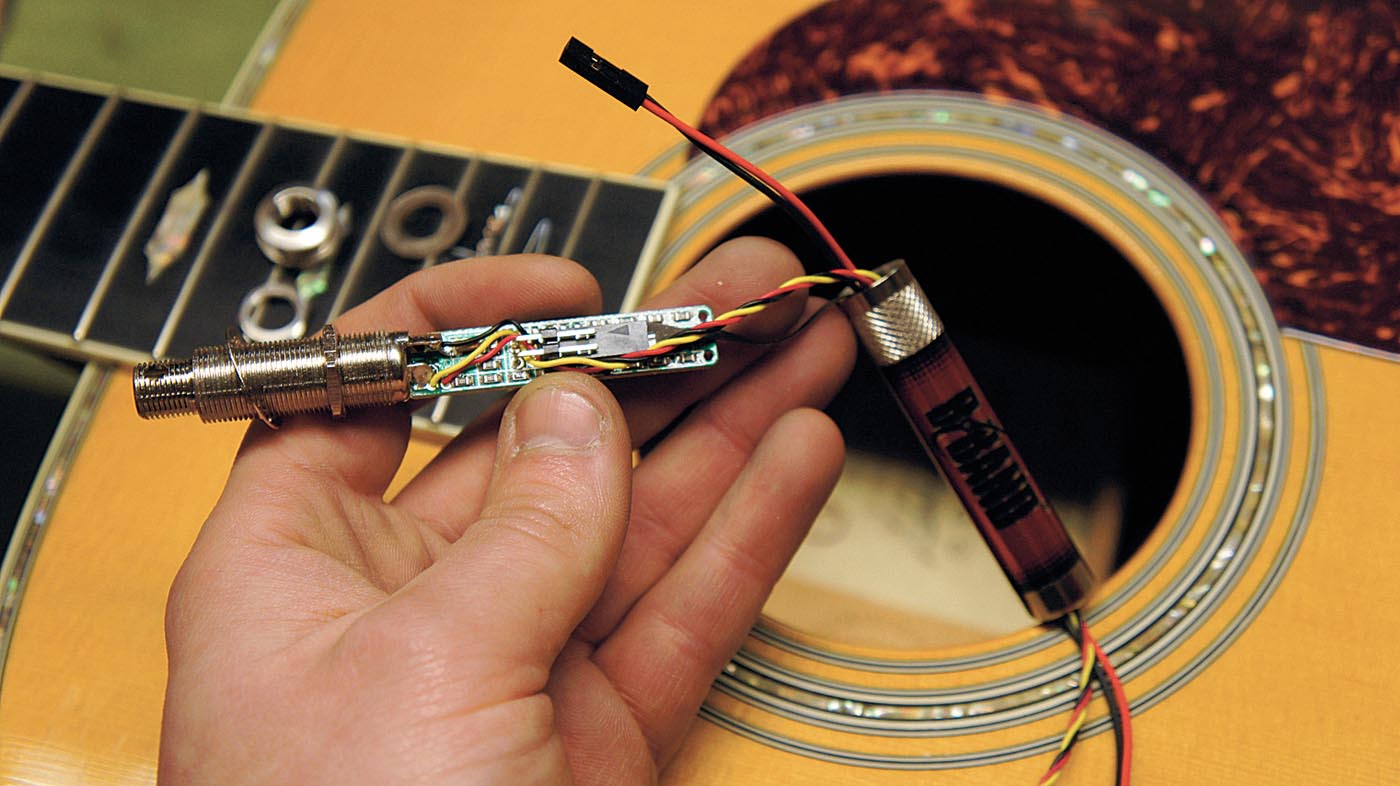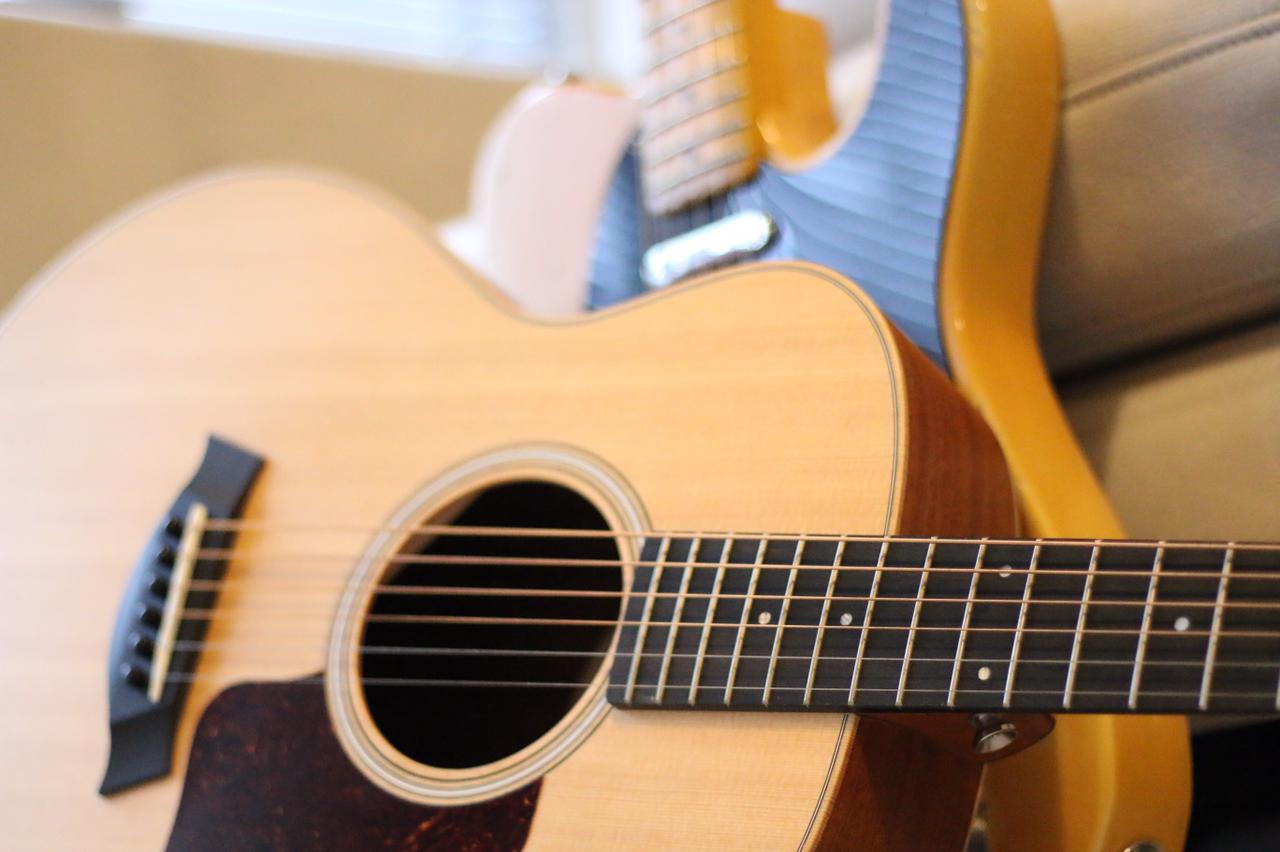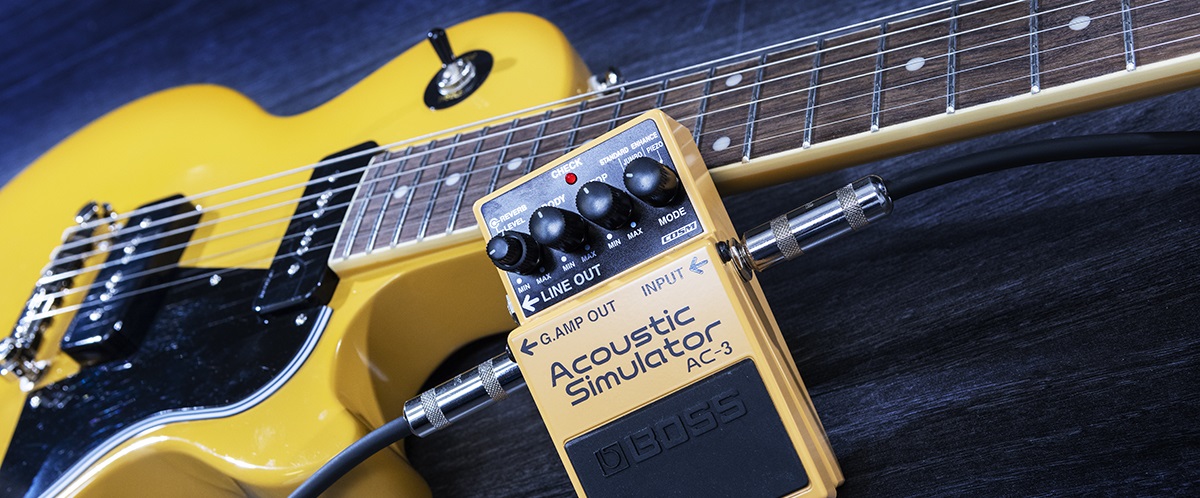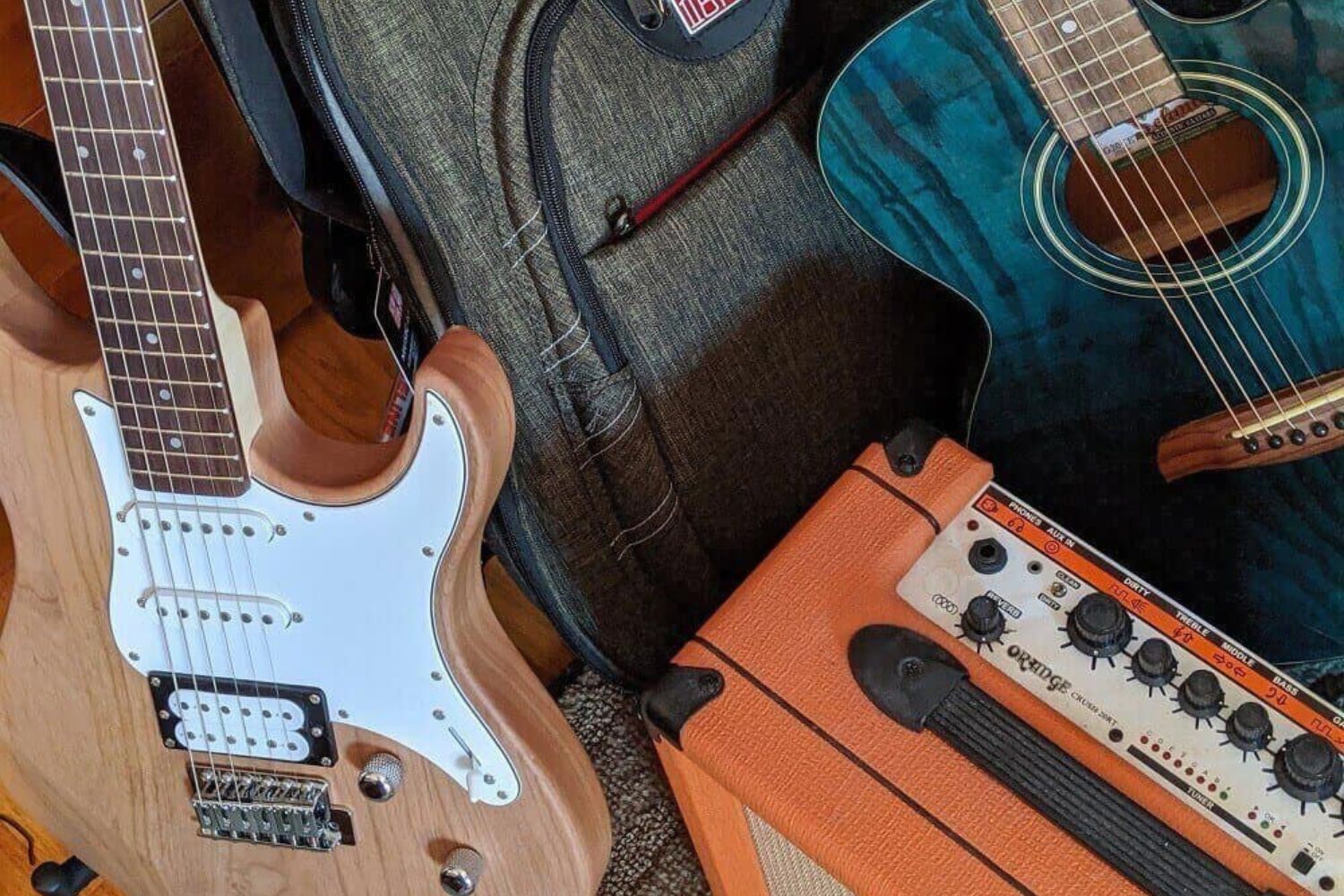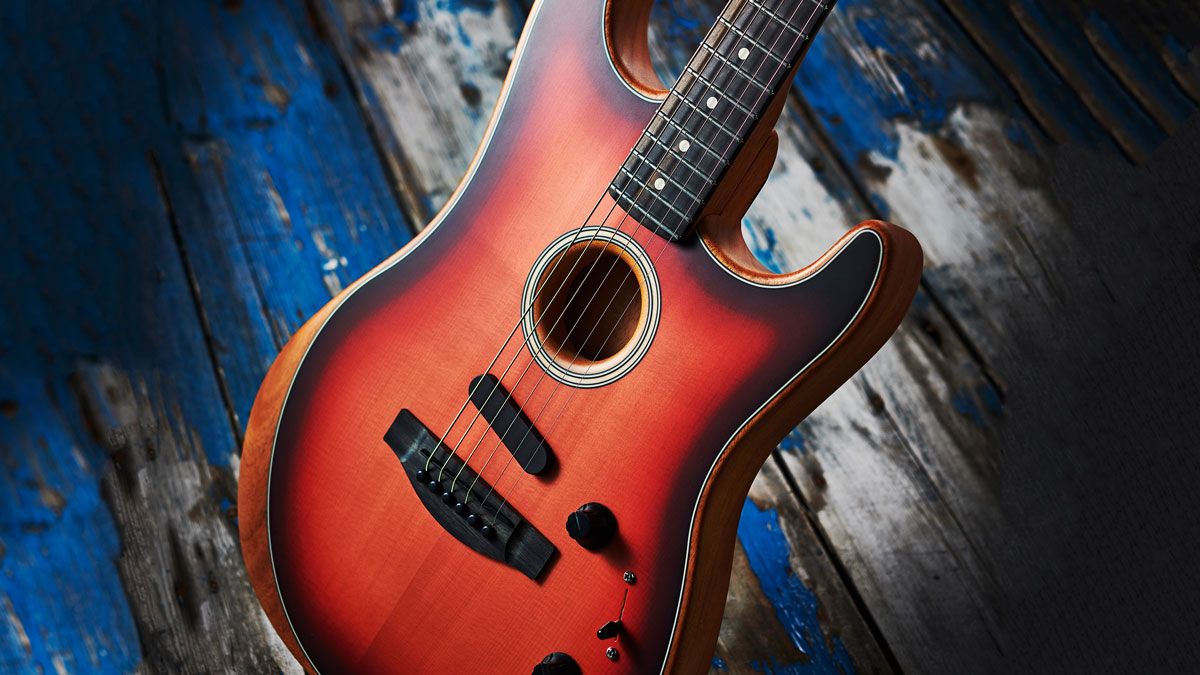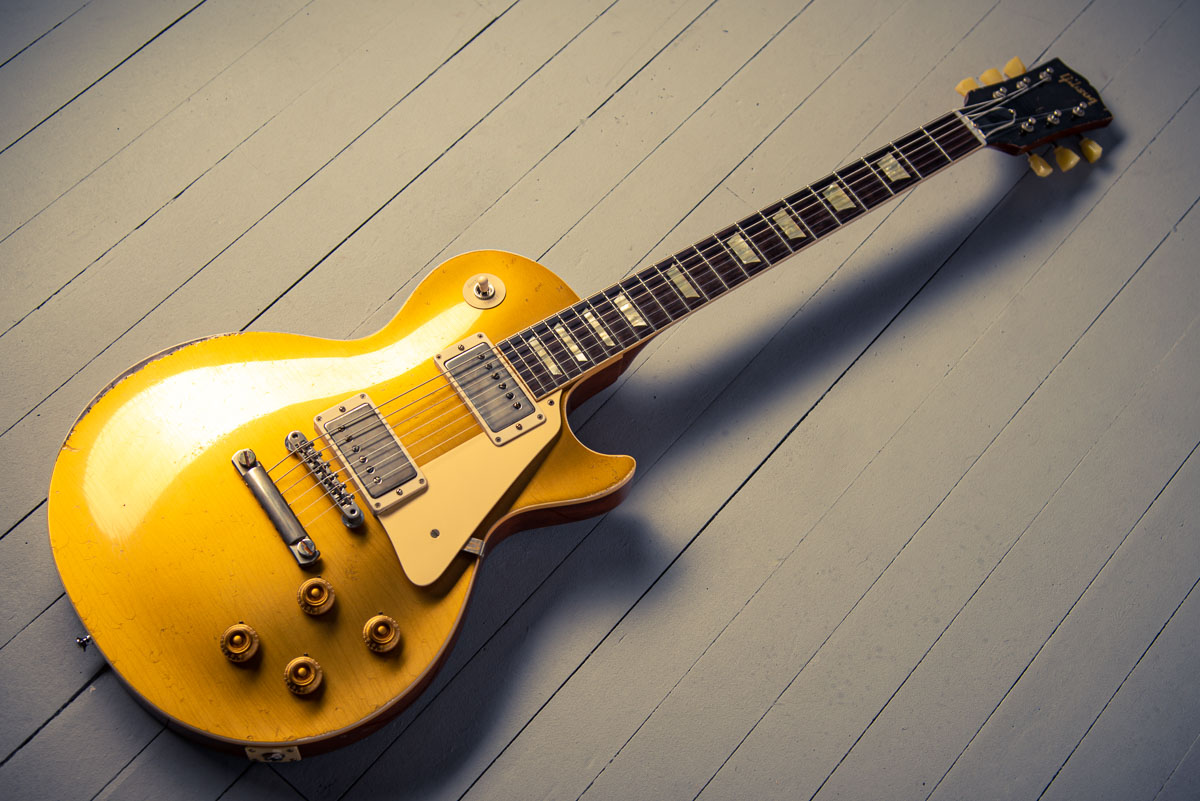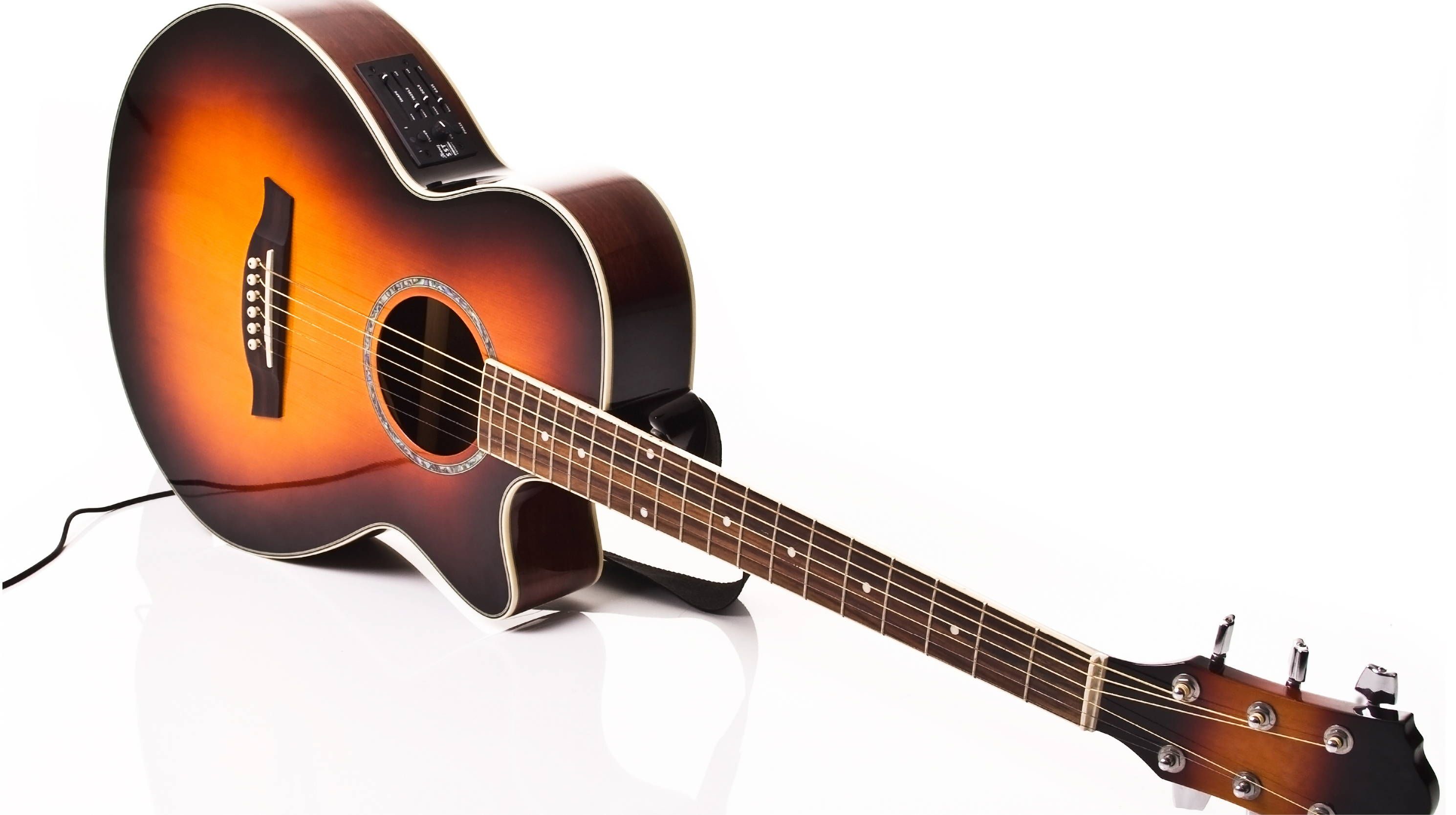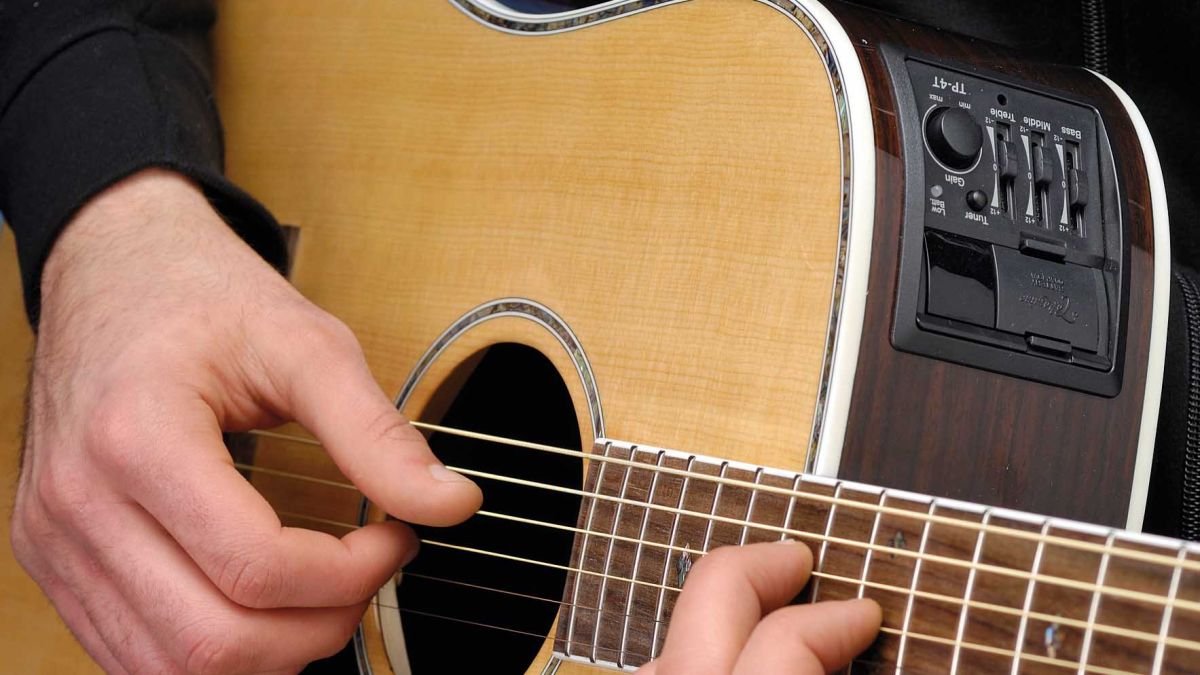Introduction
When it comes to amplifying your acoustic guitar, using a pickup system is the go-to solution. And if you’re looking for exceptional clarity and tonal range, the Highlander pickups are an excellent choice. Designed to capture the intricate nuances of your acoustic guitar’s sound, these pickups deliver a rich and natural tone.
But to truly elevate your acoustic guitar playing experience, pairing your Highlander pickups with the right effects pedals can make a world of difference. With the right combination, you can add depth, dimension, and a variety of artistic effects to your sound. Whether you’re performing live or recording in the studio, effects pedals can help create a captivating sonic experience.
In this article, we will explore the world of effects pedals that complement acoustic guitars equipped with Highlander pickups. We’ll delve into the different types of pedals and how they can enhance your acoustic guitar sound. So, if you’re ready to take your playing to the next level, let’s dive in!
Understanding Highlander Pickups
Highlander pickups are well-known among acoustic guitarists for their exceptional quality and sound replication. These pickups consist of a transducer that captures the vibrations and nuances of your guitar strings and converts them into an electrical signal, which is then amplified.
One of the key advantages of Highlander pickups is their ability to faithfully reproduce the natural tone of your acoustic guitar. Unlike some other pickup systems, Highlander pickups are designed to minimize interference and deliver a clear, balanced sound.
Highlander pickups use a combination of piezo and microphone elements to capture the full spectrum of your guitar’s sound. The piezo element picks up the vibrations and resonance of the strings, while the microphone element captures the subtleties and overtones. This dual-element configuration ensures that both the fundamental tone and the nuances of your guitar’s sound are accurately reproduced.
Another notable feature of Highlander pickups is their versatility. They can be easily installed in various types of acoustic guitars, including dreadnoughts, concert-sized guitars, and even nylon-string classical guitars. This makes them a popular choice among professional musicians and hobbyists alike.
In addition, Highlander pickups typically come with an onboard preamp, which allows you to shape and fine-tune your sound. The preamp provides controls for volume, tone, and often includes EQ options to optimize your guitar’s sound in different playing environments.
Overall, Highlander pickups are highly regarded for their superior sound quality, natural tone reproduction, and versatility. If you’re looking to enhance the sound of your acoustic guitar, investing in a Highlander pickup system is a fantastic choice.
Effects Pedals for Acoustic Guitar
Effects pedals can add depth, texture, and character to your acoustic guitar sound. They allow you to explore different sonic possibilities and create a unique signature tone. Here are seven essential effects pedals that can complement acoustic guitars with Highlander pickups:
- Compression Pedal: A compression pedal evens out the dynamics of your guitar’s sound, resulting in a more consistent volume level. It can enhance sustain, add warmth, and smooth out any inconsistencies in your playing.
- Equalizer Pedal: An equalizer pedal allows you to shape the frequency response of your guitar. It enables you to boost or cut certain frequencies, giving you greater control over your tone and allowing you to sculpt your sound to fit different musical styles and environments.
- Reverb Pedal: Adding a reverb pedal to your rig can recreate the natural ambience of different environments, from small rooms to large halls. It adds a sense of depth and spaciousness to your sound, making it more immersive and atmospheric.
- Delay Pedal: A delay pedal produces repeated echos of your guitar signal, creating a sense of space and depth. It can be used to create rhythmic patterns, add emphasis to certain passages, or achieve a lush, atmospheric sound.
- Chorus Pedal: A chorus pedal adds thickness and shimmer to your guitar sound by duplicating and slightly detuning the original signal. It can create a lush and expansive sound that adds depth and richness to your playing.
- Boost Pedal: A boost pedal is perfect for adding volume and enhancing your guitar’s presence. It can be used to drive your amp or overdrive pedals, providing a natural and dynamic sound that will make your guitar cut through the mix.
- Tuner Pedal: While not strictly an effect, a tuner pedal is an essential tool that ensures your guitar is always in tune. It allows for quick and accurate tuning, making it indispensable for live performances and studio recordings.
By experimenting with these effects pedals, you can unleash your creativity and explore a wide range of sonic possibilities. Each pedal offers its unique flavor, so don’t be afraid to mix and match them to find the perfect combination for your acoustic guitar with Highlander pickups.
Compression Pedal
A compression pedal is a valuable tool for acoustic guitarists looking to achieve a smooth and consistent sound. It works by reducing the dynamic range of your guitar’s signal, leveling out the volume and boosting sustain. Whether you’re playing fingerstyle or strumming chords, a compression pedal can enhance the overall balance and clarity of your sound.
When playing an acoustic guitar, the dynamic range can vary significantly between softly picked notes and forcefully strummed chords. A compression pedal helps to even out these differences by compressing the signal’s volume peaks and lifting the quieter parts. This creates a more consistent sound, making your playing more polished and professional.
Additionally, a compression pedal can add warmth and sustain to your acoustic guitar sound. The sustained notes will ring out longer and the subtle nuances in your playing will become more pronounced. The overall effect is a smoother, more controlled tone that enhances the musicality of your performance.
When using a compression pedal, it’s essential to find the right balance. Too much compression can result in a loss of dynamics and an unnatural sounding tone. Start by setting the pedal to a subtle compression level and adjust it to your preference. Pay attention to how it affects the attack and release of your notes and find the sweet spot that preserves the natural dynamics of your playing.
Whether you’re playing live or recording in the studio, a compression pedal is a valuable tool for acoustic guitarists. It can help you achieve a refined and professional sound by balancing the dynamics and enhancing the sustain of your guitar. Experiment with different compression settings to find the perfect balance that suits your playing style and lets your Highlander pickup-equipped acoustic guitar shine.
Equalizer Pedal
An equalizer pedal is a powerful tool that allows you to shape the frequency response of your acoustic guitar and tailor your tone to suit different musical styles and playing environments. It gives you precise control over the bass, midrange, and treble frequencies, allowing you to boost or cut specific frequencies to sculpt your sound.
With an equalizer pedal, you can enhance the natural characteristics of your guitar and eliminate any unwanted frequencies. For example, if your guitar sounds too boomy, you can use the equalizer pedal to attenuate the low-end frequencies and tighten up the overall sound. If your guitar lacks presence and brightness, you can boost the higher frequencies to add clarity and sparkle.
Furthermore, an equalizer pedal can help you adapt your sound to different performance venues. In situations where the acoustics are unfavorable, you can use the pedal to compensate for the room’s deficiencies. For instance, if you are playing in a venue with excessive reverb, you can reduce the high frequencies to minimize the harsh reflections.
Another advantage of an equalizer pedal is its ability to resolve feedback issues. Acoustic guitars are prone to feedback, especially when playing at high volumes. With an equalizer pedal, you can identify and control the frequencies that are causing feedback and cut them accordingly. This allows you to play with more volume and power without unwanted feedback interrupting your performance.
When using an equalizer pedal, it’s important to start with a flat EQ setting and listen to your guitar’s natural sound. From there, make subtle adjustments to shape your tone to your liking. Remember to take into consideration the overall mix and the instruments you’re playing with, as well as the specific sonic characteristics of your Highlander pickup-equipped guitar.
Whether you want to boost certain frequencies to highlight the nuances of your playing or cut frequencies to eliminate unwanted noise, an equalizer pedal offers you the versatility and control to fine-tune your acoustic guitar sound. It’s a valuable tool for any guitarist looking to shape their tone and achieve the best possible sound from their guitar.
Reverb Pedal
A reverb pedal is an essential effects pedal for adding depth, dimension, and ambience to your acoustic guitar sound. It simulates the natural reverberation that occurs in different environments, replicating the acoustics of various spaces from small rooms to large concert halls.
By adding a reverb pedal to your signal chain, you can create a sense of space and immersion in your acoustic guitar sound. It can make your guitar sound more spacious, as if it’s being played in a room with natural reflections. The reverb tail can add a touch of sustain and bloom to your notes, enhancing the overall musicality and richness of your playing.
One of the key benefits of using a reverb pedal is the versatility it offers. You can dial in different reverb types, such as spring, hall, plate, or room, depending on the desired effect. Each type of reverb has its own unique characteristics, allowing you to create a sound that complements your playing style and musical genre.
Additionally, a reverb pedal can help blend your acoustic guitar sound with other instruments in a live setting. It adds a sense of cohesion and space to the overall mix, making your guitar sound more integrated without overpowering the other elements. In a studio recording, a reverb pedal can add depth and width to your guitar tracks, creating a more immersive sonic experience.
When using a reverb pedal, it’s important to find the right balance. Too much reverb can make your sound wash out and become indistinct, while too little can make it sound dry and lifeless. Experiment with different reverb settings and adjust the decay and mix controls until you find the perfect balance that enhances the natural sound of your acoustic guitar.
Whether you’re aiming for a subtle touch of ambience or a lush, atmospheric sound, a reverb pedal is a must-have for acoustic guitarists. It opens up a world of sonic possibilities and allows you to create a captivating and immersive sound that will captivate your listeners.
Delay Pedal
A delay pedal is a versatile effects pedal that can add texture and depth to your acoustic guitar sound. It produces repeated echoes of your guitar signal, creating a mesmerizing effect that can enhance your playing and add a unique sonic dimension to your performance.
With a delay pedal, you can create rhythmic patterns, add emphasis to certain passages, or achieve a spacious and ethereal sound. By adjusting the delay time, feedback, and mix controls, you can customize the effect to suit your musical style and preference.
The primary function of a delay pedal is to create a sense of space and repetition. Each echo is a slightly delayed and softened version of your original guitar signal. This can make your playing sound more intricate and dynamic, especially when playing complex fingerstyle patterns or melodic riffs.
Delay pedals come in various types, such as analog, digital, or tape delay, each with its distinct characteristics. Analog delays tend to have a warm and vintage sound, while digital delays offer pristine and precise echoes. Tape delays provide a more saturated and saturated sound reminiscent of classic recordings.
When using a delay pedal with your acoustic guitar equipped with Highlander pickups, it’s important to experiment with different settings to find the sweet spot. Start with shorter delay times and gradually increase them to avoid overpowering your sound. Consider the tempo of the song and the overall atmosphere you want to create.
Furthermore, a delay pedal can be used in combination with other effects pedals to create more complex and layered sounds. For example, combining delay with reverb can produce a lush and atmospheric sound, perfect for creating ethereal and ambient guitar passages.
Whether you’re looking to add rhythmic complexity, create sonic landscapes, or simply add a touch of uniqueness to your acoustic guitar sound, a delay pedal is an essential tool to have in your arsenal. It can inspire creativity and open up a world of possibilities, allowing you to elevate your acoustic guitar playing to new heights.
Chorus Pedal
A chorus pedal is an excellent addition to your effects pedals lineup for acoustic guitar with Highlander pickups. It can add depth, warmth, and a shimmering quality to your tone, enhancing the overall richness and texture of your sound.
The chorus effect is created by duplicating your guitar signal, slightly detuning one copy, and blending it back with the original signal. This creates the illusion of multiple guitars playing simultaneously. The resulting sound is lush, vibrant, and chorus-like, reminiscent of a choir singing in unison.
The chorus effect can make your acoustic guitar sound more spacious and expansive. It adds width to your sound, making it feel larger and more enveloping. This is particularly useful when playing solo or when you want to fill out the sonic spectrum without adding additional instruments.
In addition to its spatial qualities, a chorus pedal can also add a touch of modulation and movement to your sound. The subtle detuning effect creates a captivating and organic sound that gives your guitar a gentle, swirling character. This can be especially effective when playing arpeggios, fingerpicked melodies, or clean rhythms.
When using a chorus pedal, it’s important to find the right balance. Too much chorus can make your sound overly artificial and overwhelming, while too little may not have a noticeable effect. Start with conservative settings and adjust the depth and rate controls accordingly. Experiment with different chorus types, such as subtle, vintage, or lush, to find the one that best suits your playing style and musical genre.
A chorus pedal can also work well in combination with other effects pedals. Pairing it with a reverb pedal can create a dreamy, atmospheric sound, while combining it with a delay pedal can produce a swirling, layered texture. The possibilities are endless, and by experimenting with different pedal combinations, you can create your unique sonic palette.
In summary, a chorus pedal is a fantastic tool for acoustic guitarists. It adds depth, dimension, and movement to your sound, making your guitar playing more captivating and expressive. With a chorus pedal in your setup, you can create a beautiful and immersive sound that will captivate your audience.
Boost Pedal
A boost pedal is a powerful tool for acoustic guitarists with Highlander pickups, as it allows you to increase your signal’s volume and add a touch of extra power to your sound. It can be used to boost your guitar’s output level, push your amp into overdrive, or simply provide a clean and transparent volume increase.
The primary function of a boost pedal is to amplify your guitar’s signal without adding any significant coloration or distortion. It provides a clean and transparent volume boost, allowing your guitar’s natural tone to shine through. This can be particularly useful in situations where you need to cut through the mix or add extra punch to solos and lead passages.
By adding a boost pedal to your signal chain, you can achieve a more consistent volume level, especially when switching between different playing styles or switching between fingerpicking and strumming. It can help balance the dynamics of your playing, ensuring that your soft passages are heard and your powerful strums don’t overpower the mix.
Another benefit of a boost pedal is its ability to drive your amplifier or other effects pedals. When engaged, it can push your amp’s tubes into overdrive, adding natural warmth and harmonics to your sound. This can be particularly desirable for players looking for a more saturated and gritty tone.
When using a boost pedal, it’s important to be mindful of the overall mix and context of your playing. While a boost pedal can provide added volume and power, using it excessively or inappropriately can result in an unbalanced sound and overpowering other instruments. Adjust the level of the boost pedal to achieve the desired effect without sacrificing the overall sonic balance.
Furthermore, a boost pedal can be a useful tool when using other effects pedals in your signal chain. For example, it can give extra driving force to your overdrive or distortion pedals, resulting in a more expressive and dynamic tone. It can also be used in conjunction with other effects, such as delay or reverb, to create more pronounced and impactful soundscapes.
In summary, a boost pedal is a versatile and valuable addition to your acoustic guitar setup with Highlander pickups. It provides a clean and transparent volume boost, allowing you to cut through the mix, balance dynamics, and drive your amplifier or other effects pedals. With a boost pedal, you can add that extra touch of power and impact to your acoustic guitar sound.
Tuner Pedal
A tuner pedal is an essential tool for any acoustic guitarist, providing quick and accurate tuning on stage or in the studio. While not an effects pedal per se, a tuner pedal is a valuable addition to your pedalboard, ensuring that your acoustic guitar is always perfectly in tune.
One of the primary benefits of a tuner pedal is its accuracy. Tuning by ear can be challenging, especially in noisy environments or when you’re in a rush. A tuner pedal provides a visual reference, allowing you to tune your guitar quickly and confidently. The display typically indicates whether a string is sharp, flat, or perfectly in tune, eliminating guesswork and ensuring precise tuning.
Additionally, a tuner pedal can mute your signal while you’re tuning. This is particularly useful when playing live, as it allows you to discreetly tune your guitar without producing any sound. This ensures that you can tune up silently between songs or during breaks, without disturbing the audience or other band members.
Many tuner pedals also offer additional features, such as multiple tuning modes (chromatic, guitar, bass, etc.), alternate tuning options, and even built-in high-quality microphone or direct input for more accurate tuning. These features make tuner pedals versatile and well-suited for a wide range of musical genres and instrument types.
Using a tuner pedal is straightforward. Simply plug your guitar into the input of the pedal, and the display will show the pitch of the string you’re playing. Adjust the tuning peg until the display indicates that the string is in tune, and move on to the next string until your guitar is perfectly tuned.
Whether you’re performing live or recording in the studio, having a tuner pedal in your setup ensures that your acoustic guitar always sounds its best. It allows you to maintain accurate tuning, preserving the integrity of your playing and ensuring that your music is in harmony with other musicians and instruments.
In summary, a tuner pedal is an indispensable tool for acoustic guitarists. Its accuracy, mute functionality, and additional features make it an essential part of any pedalboard setup. By incorporating a tuner pedal into your rig, you’ll have the peace of mind that your guitar is always perfectly tuned, enabling you to focus on playing and delivering your best performance.
Conclusion
In conclusion, the combination of Highlander pickups and effects pedals can take your acoustic guitar sound to new heights. Understanding the capabilities of Highlander pickups allows you to appreciate their ability to capture the natural tone of your instrument with exceptional clarity and accuracy.
By incorporating effects pedals into your acoustic guitar setup, you can add depth, texture, and dimension to your sound. Each pedal serves a unique purpose in shaping and enhancing your tone. From compression pedals that even out dynamics to delay pedals that create captivating echoes, the possibilities are endless.
Equalizer pedals provide precise control over your guitar’s frequency response, allowing you to sculpt your sound to fit different musical styles and environments. Reverb pedals can add immersive ambience, creating a sense of space and depth in your playing. Chorus pedals offer lush and shimmering tones, while boost pedals provide volume and power to cut through the mix.
Lastly, a tuner pedal ensures that your acoustic guitar is always perfectly in tune, allowing you to maintain accurate tuning and play with confidence. It is a crucial tool for every guitarist, whether performing live or recording in the studio.
By exploring the world of effects pedals and experimenting with different combinations, you can find the sounds that complement your playing style and bring out the best in your acoustic guitar equipped with Highlander pickups. Choose the pedals that resonate with your musical preferences and use them to create a unique sonic signature that sets you apart.
So, whether you’re a live performer looking to captivate your audience or a recording artist seeking to add depth and creativity to your tracks, don’t underestimate the power of effects pedals. Embrace the possibilities they offer and let your acoustic guitar with Highlander pickups truly shine.







